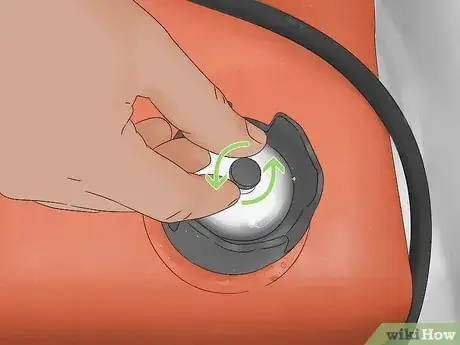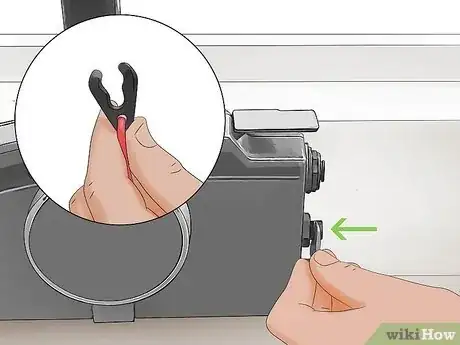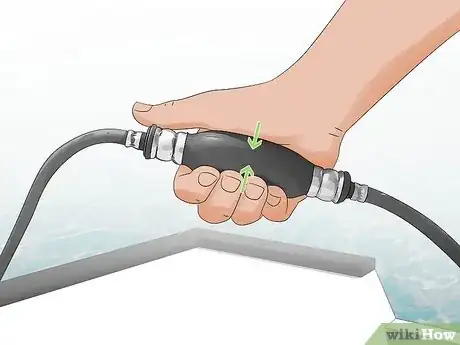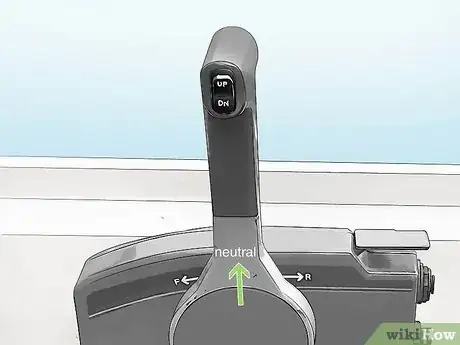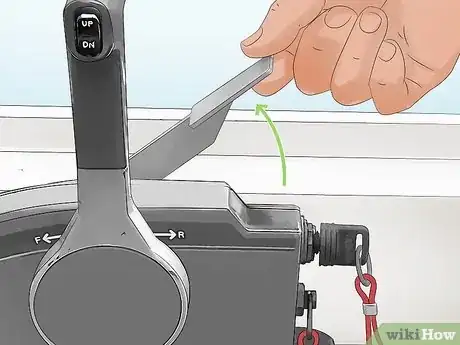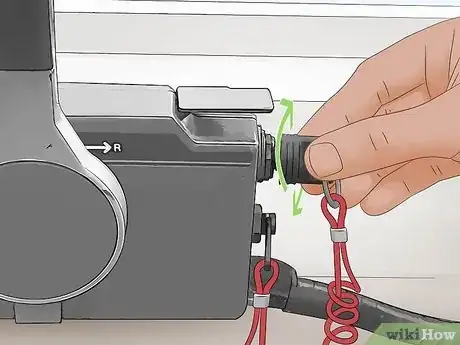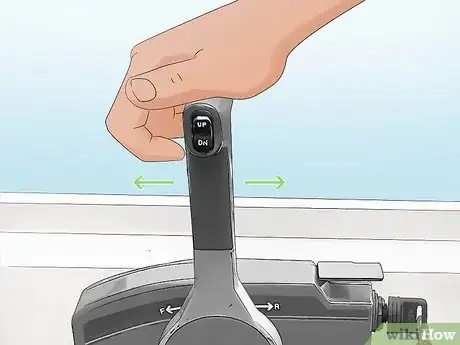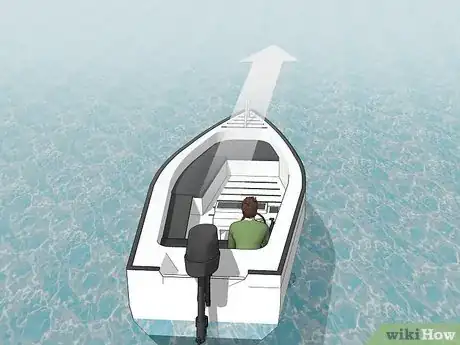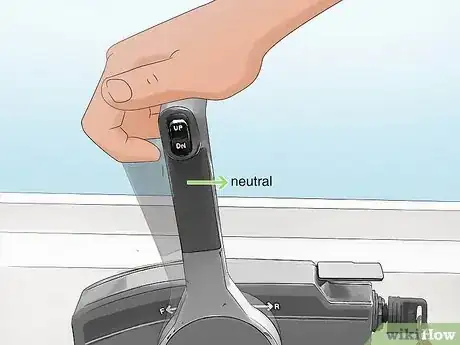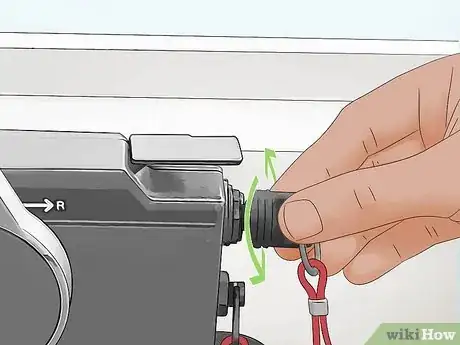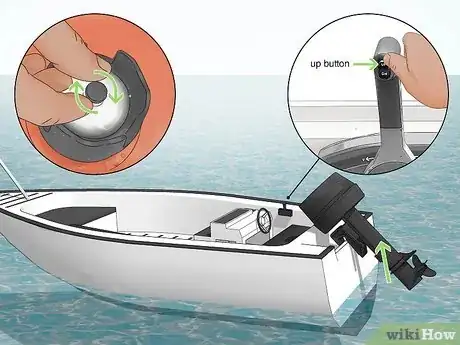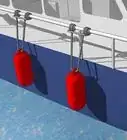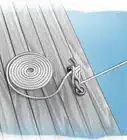This article was co-authored by Jason Shackelford and by wikiHow staff writer, Dan Hickey. Jason Shackelford is the Owner of Stingray Auto Repair, a family owned and operated auto repair shop with locations in Seattle and Redmond, Washington. He has over 24 years of experience in auto repair and services, and every single technician on Jason’s team has more than 10 years of experience.
There are 9 references cited in this article, which can be found at the bottom of the page.
This article has been viewed 43,760 times.
Boating is a super fun, liberating activity you can enjoy with friends and family—as long as someone knows how to get that outboard motor started. It might look like a complicated piece of machinery, but making that engine roar is actually a really straightforward, easy to learn process. That’s why we’ve put together a handy guide to starting (and stopping) an outboard motor boat with manual or electric start. If you’re ready to captain your ship and tread the high seas, keep scrolling!
Steps
Open the ventilation cap on the fuel tank.
-
Twist open the ventilation cap to allow air in the tank as the fuel drains. This prevents a vacuum from forming inside the tank while the motor’s going, which can damage the tank or motor. The cap is usually a small button on the fuel tank cap that twists open and closed.[1] X Research source
- Keep the ventilation cap closed when the boat is not in use.
- When you open the cap, take an extra second to double check you have enough fuel and to check for debris in the fuel tank.
- If your tank is self-ventilating, you can skip this step.
Tilt the motor into the water.
-
Lower the motor until the propellers are entirely submerged. On smaller boats, tilt the motor (adjust the trim) by pulling a pin in the motor bracket and lowering the motor manually. Many boats also have an up/down switch on the gear shift that moves it mechanically.[2] X Research source
- Lowering the motor ensures everyone on board’s safety in the event that the motor starts unexpectedly.
- Tilting the motor down also allows fuel to get to the carburetors more easily.
Engage the kill switch on manual ignition motors.
-
The kill switch is usually a lanyard with a 2-pronged metal clip on it. Wear one end of the lanyard on your wrist, belt loop, or life jacket. Connect the other end to the kill switch knob, typically located on the front of the motor’s outer casing. If you fall overboard, the switch disconnects and the motor stops immediately.[3] X Research source
- The motor won’t start without the kill switch since it completes the electrical circuit needed to run.
- Kill switches protect you and others in the water by stopping the boat when someone falls out due to waves, hitting an object, or mishandling the boat.[4] X Research source
- On electric start motors, the kill switch is the key you place in the ignition.
Squeeze the primer bulb.
-
Pump the bulb several times to put some fuel into the motor. You’ll know you’re primed and ready when the bulb feels firm and the inline filter is filled with fuel. Check the fuel line connections for leaks afterward. Take caution not to over-pump since this can flood the motor.[5] X Research source
- You’ll know the motor is flooded if it won’t start and you smell gas. If this happens, first wait at least 5 minutes for some fuel to flow back into the tank and try starting the motor again.
- If it still won’t start, shift to neutral, hold the throttle open, and crank the engine. This is called a clear-flood start.[6] X Research source
Put the gear shift lever in the neutral position.
-
Always make sure you’re in neutral before you start the motor. That way, the boat won’t lurch forward or backward when you turn it on. The shift lever design varies by boat—many are vertical, with neutral being the straight up position. Some are a handles on the tiller that twist to forward, neutral, or backwards.[7] X Research source
Turn on the choke.
-
Activate the choke button or lever, depending on your motor model. The choke restricts the airflow to the carburetor, which saturates the air inside with fuel and lets the motor start in low temperatures. Sit with the choke on for a few seconds before pulling the starter cord.[8] X Research source
- Look for a switch labeled “open” and “close” if there’s a choke lever. Otherwise, the choke is a small button on the front of the motor.
- Some electric start motors have a choke switch like manual ignition motors. On others, activate the automatic choke by pushing the key deeper into the ignition.
- If the engine is still warm, you may not need the choke to get started unless the engine won’t start after a few pulls of the starter cord.
Start the ignition.
-
Pull the starter cord or turn the key to turn on the motor. If you have a starter cord, pull slowly until you feel some resistance, then yank it quickly and forcefully. It may take several pulls to get the motor running. If you have an electric start motor with a key, just turn it forward in the ignition like a car.[9] X Research source
Turn off the choke.
-
Once the motor is running, turn off the choke before you start driving. Simply press the choke button again, or move the choke lever back to its starting position. Driving with the choke on allows too much fuel into the engine, which can flood it. It will also foul the spark plugs, leading to motor damage and potential repairs.[10] X Research source
- If you have an automatic choke on an electric start motor, release the key into its normal position to turn off the choke.[11] X Research source
- Once the choke is off and the motor’s running, you’re ready to cruise!
Shift forward or backward to drive the boat.
-
Switch the gear forward to cruise or backward to maneuver out of a slip. If you’re backing up, make sure there are no objects or people behind you. Start driving slowly and advance the throttle to work up to your desired speed.[12] X Research source
- If your boat has a steering wheel, direct the boat just like a car. If it has a tiller, remember that pushing it left will move you to the right and vice versa.
- Once you’re cruising, adjust the trim to raise or lower the bow of the boat as desired.
Aim the boat in the direction you want to stop.
-
Point the bow of the boat toward your destination to begin stopping. You’ll lose steering control as you slow down, so it’s important to make sure you’re heading the right direction. Be extra careful there are no people, objects, or docks in your path.[13] X Research source
- There’s no way to brake, but the boat will slow very rapidly once you shift to neutral or cut the engine.
Shift back to neutral.
-
Push or twist your gear shift to neutral to stop moving. It’s common to overshoot your mark, so hit neutral earlier than you think you need to. If you fall short, you can always shift to forward for a moment to nudge yourself closer.[14] X Research source
- Try not to switch directly between forward to backward gears, as this might cause mechanical damage to your boat.
Turn off the motor.
-
Once you’re in your final position, switch the motor off. On most models, there will be a red stop button—just push it to kill the engine. If you have an electric start motor, turn the key back and remove it from the ignition.[15] X Research source
Close the ventilation cap and tilt the motor up.
-
Follow these steps if you’re docking or finished boating for the day. Twist the ventilation cap on the fuel tank shut to prevent gas from evaporating out or excess air flowing through the tank. Then adjust the trim to raise the motor so the propeller blades are out of the water.[16] X Research source
Community Q&A
-
QuestionThe boat I’m thinking about getting is missing the key. It is set up with a kill switch. The boat has the option to pull start with a cord but is very hard to pull. Is there a way to start with no key?
 wikiHow Staff EditorThis answer was written by one of our trained team of researchers who validated it for accuracy and comprehensiveness.
wikiHow Staff EditorThis answer was written by one of our trained team of researchers who validated it for accuracy and comprehensiveness.
Staff Answer wikiHow Staff EditorStaff AnswerIf you don't have a key to the ignition, you can contact the boat manufacturer and purchase a new key or use the start cord instead. If you're missing the kill switch, you can purchase one according to the make and model of the motor.
wikiHow Staff EditorStaff AnswerIf you don't have a key to the ignition, you can contact the boat manufacturer and purchase a new key or use the start cord instead. If you're missing the kill switch, you can purchase one according to the make and model of the motor.
You Might Also Like
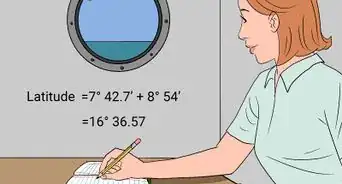
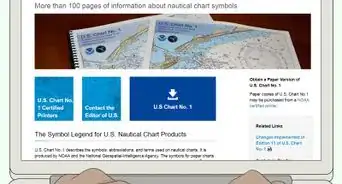
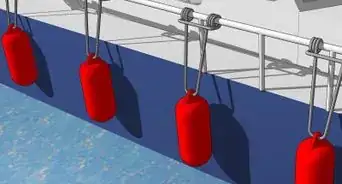



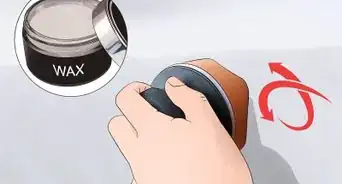
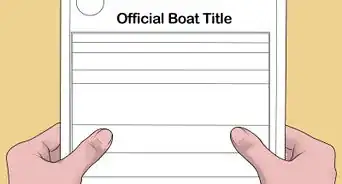

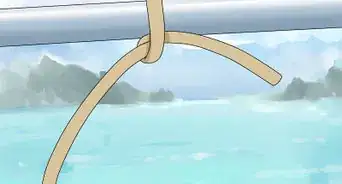
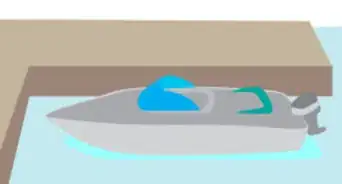

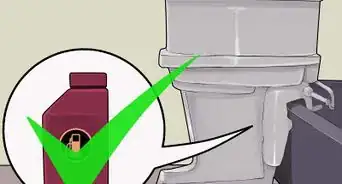
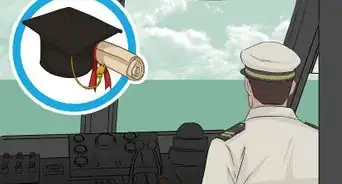
References
- ↑ https://goneoutdoors.com/hook-up-fuel-tank-outboard-motor-12214577.html
- ↑ https://www.discoverboating.com/resources/how-to-trim-a-boat
- ↑ https://www.discoverboating.com/resources/how-to-drive-a-boat
- ↑ https://www.takemefishing.org/blog/may-2021/3-reasons-for-a-boat-kill-switch/
- ↑ https://goneoutdoors.com/keep-prime-outboard-motor-10011554.html
- ↑ https://goneoutdoors.com/start-flooded-outboard-motor-7805507.html
- ↑ https://www.discoverboating.com/resources/how-to-drive-a-boat
- ↑ https://www.boatsafe.com/want-charge/
- ↑ https://www.boatsafe.com/want-charge/
- ↑ https://pontoonopedia.com/pontoon-boat-motor-wont-start/
- ↑ https://www.boatsafe.com/want-charge/
- ↑ https://www.discoverboating.com/resources/how-to-drive-a-boat
- ↑ https://www.boatsafe.com/want-charge/
- ↑ https://www.discoverboating.com/resources/how-to-drive-a-boat
- ↑ https://www.boatsafe.com/want-charge/
- ↑ https://goneoutdoors.com/hook-up-fuel-tank-outboard-motor-12214577.html
About This Article

